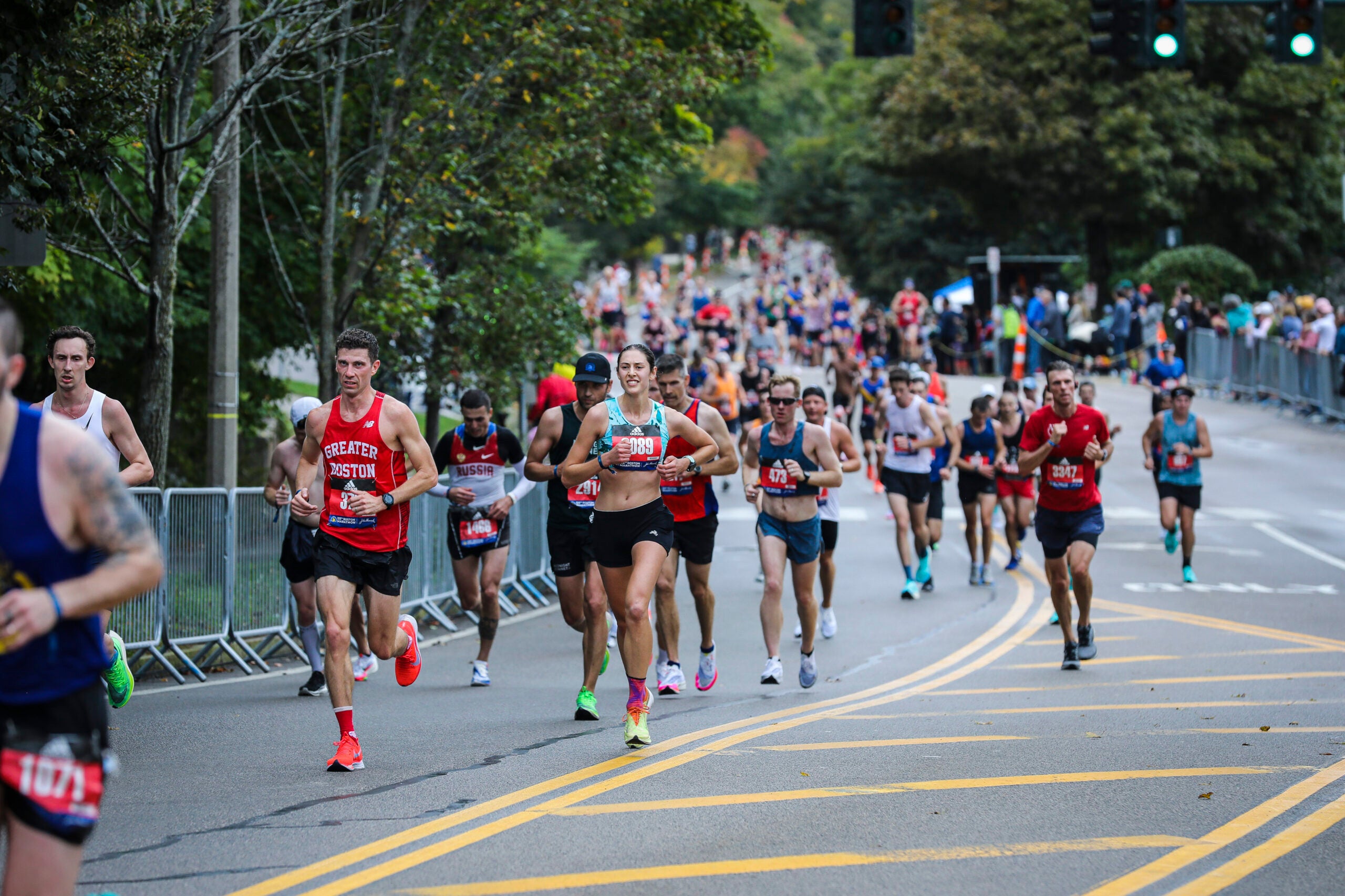Are you a track enthusiast wondering how many events you can participate in within the realm of track and field athletics? The world of track offers a plethora of options, catering to various strengths and interests. From sprinting to long-distance running, throwing to jumping, there is something for everyone. Whether you are a speed demon who thrives in short bursts of energy or a stamina powerhouse built for endurance, track events come in diverse forms to accommodate different skill sets. Join us on a journey as we delve into the extensive range of events available in track and explore the exciting possibilities that await you on the track!
Introduction: Understanding the Different Track Events
Track and field events offer a wide array of options for athletes to showcase their skills and talents. Whether you are a sprinter, distance runner, jumper, thrower, or hurdler, there is a track event tailored to your strengths and interests. Understanding the various track events can help you choose the ones that align best with your abilities and goals.
The Importance of Diversifying Your Track Events
Diversifying the track events you participate in can benefit your overall athletic development. Engaging in a mix of sprinting, distance running, jumping, and throwing events can help you build a well-rounded skill set and improve your overall performance on the track.
Exploring different track events can also keep your training exciting and challenging, preventing boredom and plateauing in your progress. Additionally, trying out various events can help you discover hidden talents and strengths that you may not have been aware of before.
The Most Popular Track Events
Some of the most popular track events include:
- Sprints: Short-distance races like the 100m and 200m.
- Distance Running: Events ranging from the 800m to the marathon.
- Jumping: High jump, long jump, and triple jump.
- Throwing: Shot put, discus, javelin, and hammer throw.
- Hurdles: 110m and 400m hurdles.

Sprints: Exploring the Options for Short-Distance Runners
When considering how many events you can do in track, short distance runners focus on sprints, which are typically races that range from 60 meters to 400 meters. These events require explosive power and speed, making them popular among athletes with fast-twitch muscle fibers.
Popular Sprint Distances
100 Meters: Known as one of the most exciting events in track and field, the 100m sprint demands immense speed and acceleration. It is often dubbed the ultimate test of pure speed.
200 Meters: This event combines speed and endurance, requiring runners to maintain their pace around the curve and power through the straightaway.
400 Meters: A challenging one-lap sprint that demands a balance of speed, endurance, and strategy in pacing to finish strong.
Training for Sprints
A well-rounded sprint training program includes components such as interval training, strength training, plyometrics, and proper rest and recovery.
- Interval Training: Alternating between high-intensity sprints and recovery periods to improve speed and anaerobic capacity.
- Strength Training: Building muscle strength and power through exercises like squats, lunges, and deadlifts.
- Plyometrics: Explosive exercises like box jumps and bounds help enhance running efficiency and power.

Mid-Distance: Finding Your Pace in Middle-Distance Events
When it comes to participating in track events, finding your pace in mid-distance events is crucial for success. In middle-distance races, such as the 800 meters and 1500 meters, athletes need to balance speed and endurance to maintain a strong performance throughout the race.
Training Strategies
Athletes looking to excel in mid-distance events should focus on a combination of speed work and endurance training. Interval training, tempo runs, and long-distance runs can help improve both anaerobic and aerobic capacity, essential for middle-distance races. It is important to consult with a coach or trainer to develop a personalized training plan.
Race Tactics
When competing in mid-distance events, athletes should strategize their race tactics carefully. Starting strong but conserving energy for a strong finish is key. Additionally, understanding how to navigate the curves, maintain proper form, and unleash a kick towards the end of the race can make a significant difference in performance. Visualization techniques can also help athletes mentally prepare for the race.
Distance Running: Endurance Challenges for Long-Distance Enthusiasts

Distance running is a test of endurance and stamina, requiring athletes to push their limits in long-distance events. For enthusiasts looking to take on the challenge, it’s essential to understand the unique demands of this sport.
Training for Long-Distance Events
A well-rounded training regimen is crucial for long-distance runners. This includes a mix of cardiovascular exercises, strength training, and ample rest and recovery periods.
Endurance challenges often require runners to build up their mileage gradually to prevent injuries and improve overall performance.
Nutrition and Hydration
Proper nutrition and hydration play a vital role in sustaining energy levels during long-distance runs. Long-distance enthusiasts need to maintain a balanced diet rich in carbohydrates, proteins, and healthy fats.
Staying hydrated before, during, and after a run is paramount to prevent dehydration and optimize performance.
Hurdles: Navigating Obstacles in Track and Field
Track and field competitions often present athletes with numerous hurdles to overcome. Whether physical barriers on the track or personal challenges, navigating these obstacles is crucial for success.
The Physical Hurdles
Athletes face literal hurdles in track and field events such as the 110m hurdles and 400m hurdles. Overcoming these obstacles requires agility, speed, and impeccable technique.
A hurdle image:
Mental Hurdles
Athletes also encounter mental hurdles, including self-doubt, fear of failure, and pressure to perform. Overcoming these challenges is essential for peak performance.
Relays: Teamwork and Speed in the Relay Races
When it comes to track events, relay races are the epitome of teamwork and speed. Athletes come together to pass the baton seamlessly, relying on each other to achieve victory.
The Importance of Teamwork
Relay races require a high level of coordination and communication among team members. Each runner plays a crucial role in the success of the team, making it essential to work together seamlessly.
Strong teamwork ensures smooth baton exchanges and efficient transitions, ultimately leading to faster overall times.
Embracing Speed and Strategy
Speed is of the essence in relay races, with athletes pushing themselves to their limits to gain a competitive edge.
Teams often strategize on the order of runners and the timing of exchanges to maximize their performance on the track.
- Strategic planning and quick execution are key components that can make or break a relay team’s success.
Field Events: Jumping, Throwing, and Vaulting in Track and Field
Field events are an integral part of track and field competitions, offering athletes the opportunity to showcase their skills in various disciplines. From jumping to throwing and vaulting, these events require a unique combination of strength, agility, and technique.
The Jumping Events
Jumping events include the long jump, triple jump, and high jump. Athletes aim to achieve maximum distance or height by executing precise take-offs and landings. The long jump involves leaping as far as possible into a sandpit, while the high jump requires clearing a horizontal bar set at increasing heights.
The Throwing Events
Throwing events such as shot put, discus throw, javelin throw, and hammer throw test an athlete’s strength and coordination. Competitors must propel the implements for maximum distance while adhering to specific rules and techniques unique to each event.
The Vaulting Events
Vaulting events, notably pole vault, challenge athletes to clear a bar using a pole to propel themselves over. This requires a combination of speed, strength, and precise pole plant technique to achieve height and clearance successfully.
Multi-Events: Decathlon and Heptathlon for the Versatile Athlete
For athletes wondering how many events can you do in track, multi-events like Decathlon and Heptathlon offer a thrilling challenge. Decathlon consists of ten track and field events for men, including sprints, hurdles, jumps, throws, and a distance race, while Heptathlon comprises seven events for women. These events demand a diverse skill set, making them ideal for athletes who excel in multiple disciplines.
Decathlon: The Ultimate Test of Athleticism
Decathlon is often referred to as the ultimate test of athleticism, as participants compete in ten events over two days. These events include 100m, long jump, shot put, high jump, 400m, 110m hurdles, discus throw, pole vault, javelin throw, and 1500m. Athletes must demonstrate speed, strength, agility, and endurance to excel in this grueling competition.
Decathlon athletes need to manage their energy levels strategically, as each event requires a different focus and approach. The scoring system in Decathlon is based on a points table, where the athlete earns points based on their performance in each event.
Heptathlon: A Blend of Speed, Strength, and Stamina
Heptathlon is the women’s equivalent of Decathlon, consisting of seven events spread over two days. The events in Heptathlon include 100m hurdles, high jump, shot put, 200m, long jump, javelin throw, and 800m. This challenging event requires a combination of speed, strength, and stamina, making it a true test of an athlete’s versatility.
Similar to Decathlon, Heptathletes earn points based on their performance in each event, with the cumulative score determining the overall winner. The ability to excel across a range of disciplines is crucial for success in Heptathlon.
Frequently Asked Questions
-
- What are the different track and field events one can participate in?
- Track and field offers a wide range of events including sprints, distance races, hurdles, jumps, throws, and relays.
-
- How many events can one typically compete in during a track meet?
- Athletes can usually compete in several events during a track meet depending on the rules of the specific competition and the schedule of events.
-
- Is there a limit to the number of events one can participate in during a track meet?
- While there may not be a strict limit on the number of events, athletes should consider their physical capabilities and performance if competing in multiple events.
-
- What factors should athletes consider when choosing which events to participate in?
- Athletes should consider their strengths, training focus, event schedule, and the possibility of fatigue when deciding which events to compete in.
Exploring Your Track Events: Final Thoughts
In summary, the world of track and field offers a plethora of event options for athletes to explore and excel in. From sprints to distance races, hurdles to relays, jumps to throws, the opportunities are vast and varied. When considering how many events you can do in track, remember that versatility can be a strength, but specialization can also lead to mastery. It’s essential to find the right balance between challenging yourself with multiple events and focusing on honing your skills in a particular discipline. Whatever your choice, the key is to set goals, work hard, stay dedicated, and enjoy the journey of becoming the best track athlete you can be.



